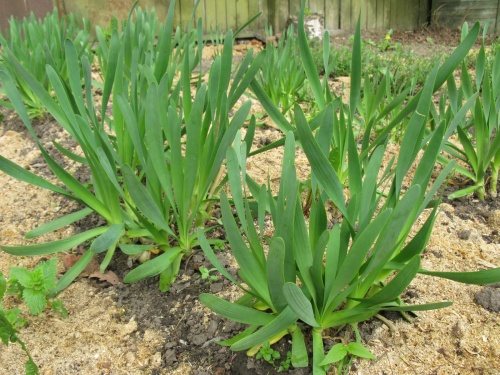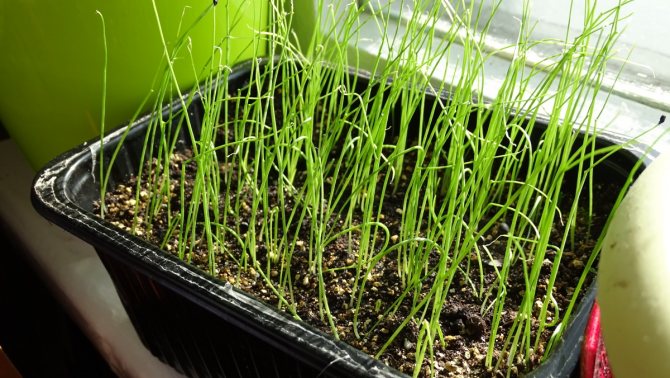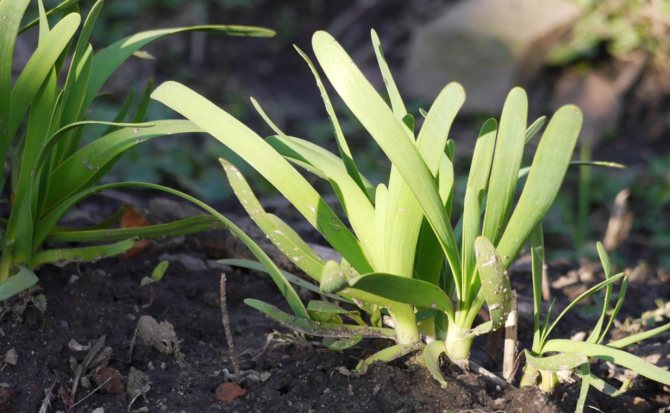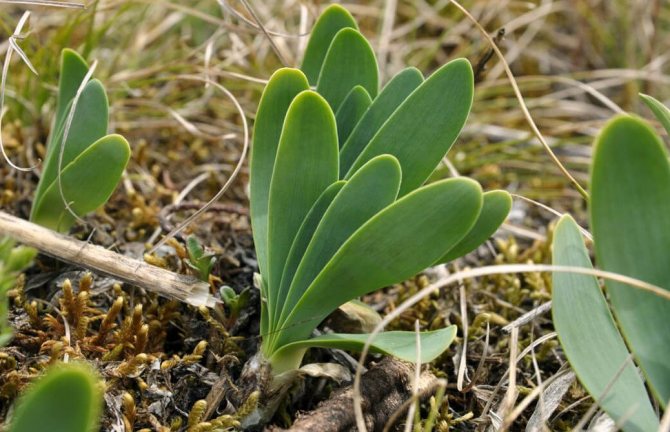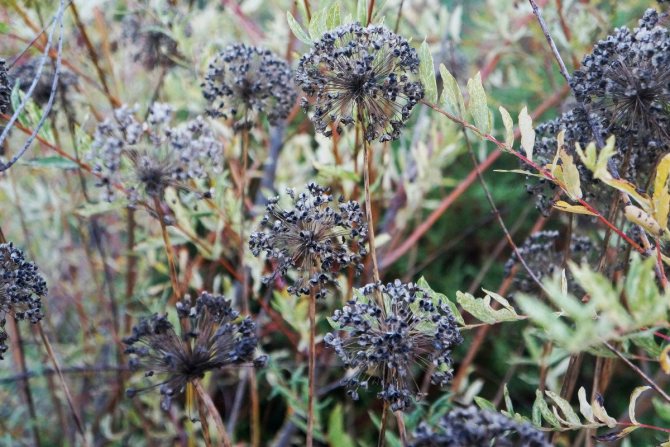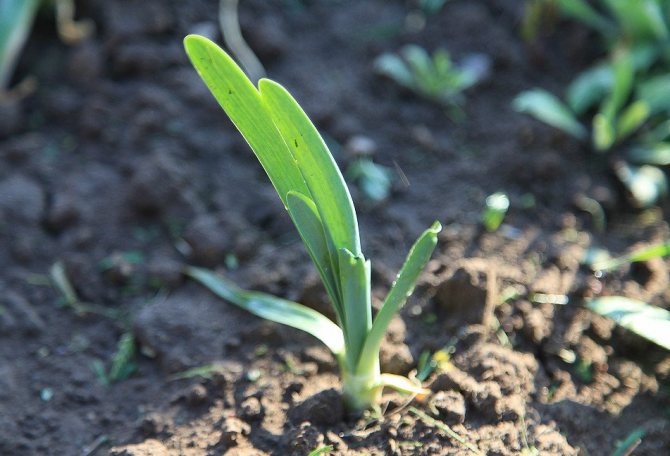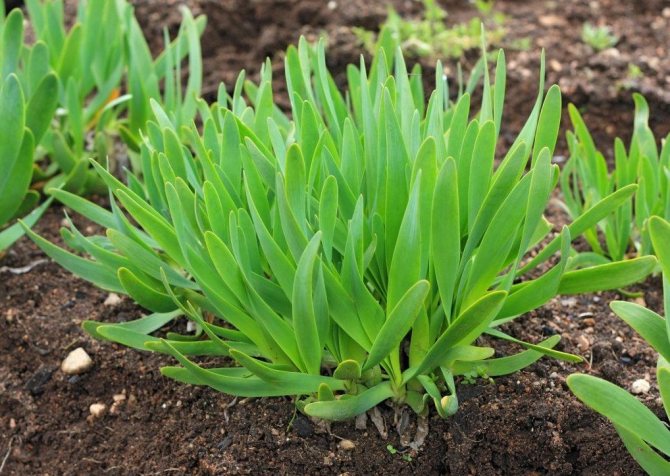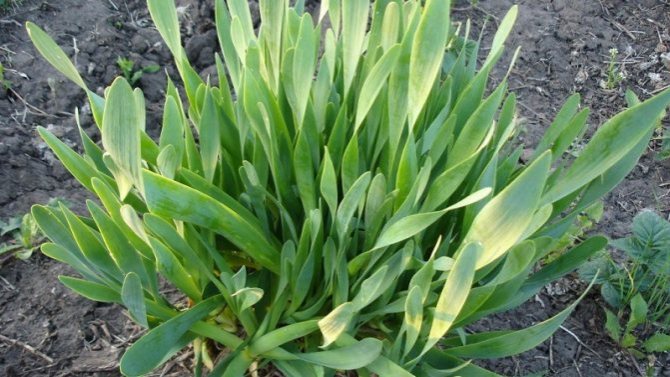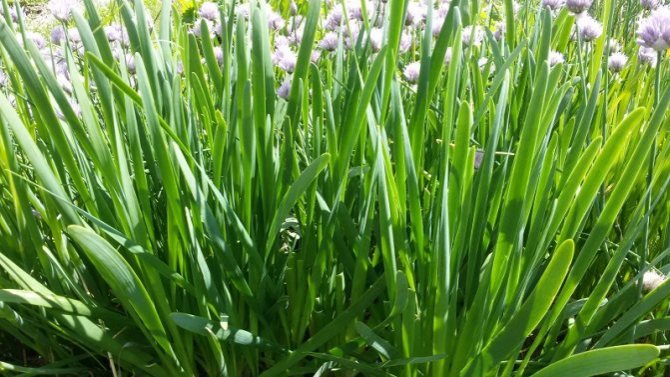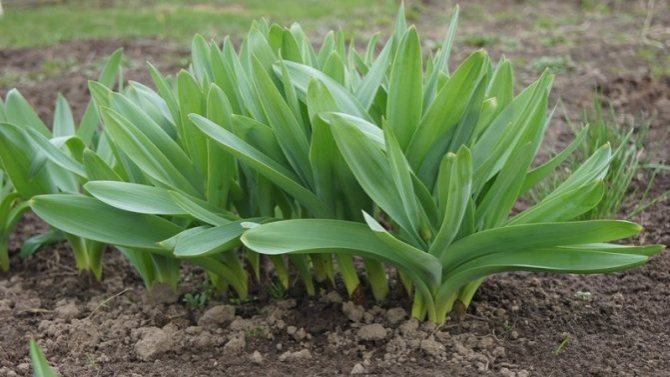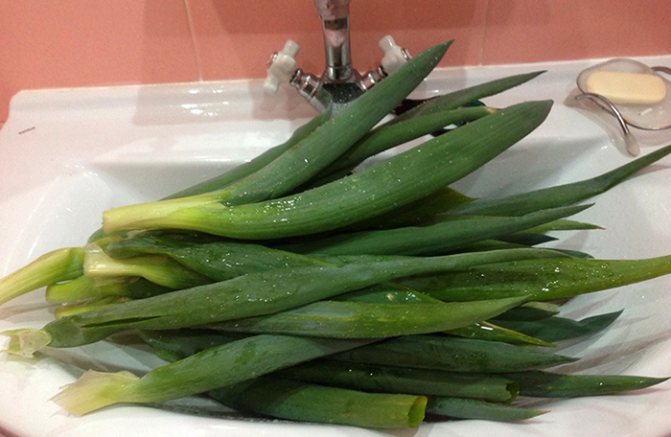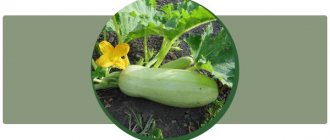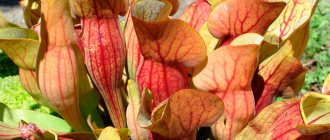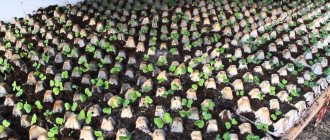This plant has an unusual name and beautiful appearance - this is a slug onion. Many gardeners do not like to grow this variety of onions, but in vain, because this plant contains many useful substances. Let's find out in more detail how to grow a slime onion yourself.
Do you know why this plant has such an unusual name? It turns out that everything is simple, if you break the stem of an adult plant in half, then a lot of mucus will flow from it. The juice of the slime onion is very useful, as is the onion itself. Therefore, you can eat not only feathers (or leaves), but also bulbs. What this garden culture is famous for, let's find out in more detail.
Onion-slime, photo, description
Slime onion is a salad onion. Its taste is pleasant, slightly spicy, with a weak garlic-onion smell. A valuable property is that the leaves do not coarse until autumn. Therefore, three or four leaf cuts can be carried out over the summer.
The leaves are thick, fleshy, tender, juicy. When cut, they secrete a viscous, transparent, viscous mucus, which apparently gave the name to this type of onion.
Its yield reaches 3-4 kg per 1 sq. m.
Grows wild in the south of Western and Eastern Siberia, Altai, in the mountains of Central Asia. It grows in large clumps in steppes, forest-steppes, as well as on salt licks, on the southern slopes of mountain ranges, provided there is good lighting and sufficient soil moisture. Local residents of Altai and Siberia use it fresh, salt and dry it.
Watch the video, this is how the slime-onion is harvested in Altai:
How to grow onions on the site?
These healthy greens can be grown in your own garden.
Important! In case of exacerbations of the gastrointestinal tract or allergies, onion slime should be excluded from the diet. It should be used with caution by nursing mothers and with gout.
Sowing seedlings is carried out in the second half of February or early March. In mid-May, the grown seedlings are planted. It is also planted in open ground with seeds from April to May, when the earth warms up enough.
You can make podzimnie crops shortly before the onset of frost.
For planting, choose a site well-lit by the sun's rays without the possibility of water stagnation in spring and after heavy rains - in this case, high beds are needed. Possibly close occurrence of groundwater, but without waterlogging. All types of onions love moderate humidity.
The vegetable in question should be planted in a place where cabbage, tomatoes, cucumbers, radishes, as well as potatoes, beans and cereals previously grew. The optimum temperature for active vegetation of this plant culture is 20 ° C.
Important! Do not plant slime onions after bulbous crops.
Soil and fertilizers
Slime prefers loamy and peaty soil with a neutral reaction (pH 6.0-7.0). He does not like acidic soils. Before planting seeds or bulbs, the site must be prepared: it must be dug up and organic fertilizers applied. It is not worth using mineral fertilizers only if the soil is not fertile.
Read more: Hydrangea Vanilla Freise paniculata description and photo planting and care pruning in the fall
Growing slime onions
Slime onion is a perennial plant. It has linear (flat) leaves 8-15 cm wide, 20-25 cm long, light and dark green in color. The plant is squat, spreading, shortened false bulb, 2-2.5 cm thick, covered with white dry scales.
Branches throughout the growing season, forming three to four branches of the shoot with 8-10 leaves in the second year. The number of shoots increases every year, by the end of the fourth or fifth year, their total number reaches 20-25, and the number of leaves from 50 to 200 per plant.
In the first four years, the shoots of the slime onion are powerful, but then the energy of the shoots is reduced. Old shoots begin to die off, the plant as a single organism ceases to exist. Therefore, it is advisable to grow slime onions in one place for no more than four to five years.
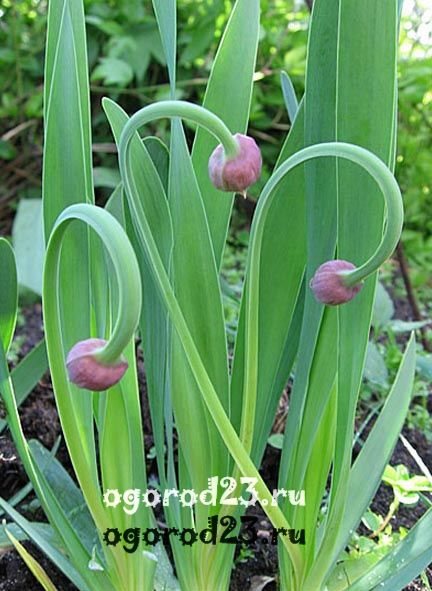
The plant blooms in the second year. The flowering stem is 20-60 cm high, about 1 cm thick. The inflorescence is a spherical umbrella. The number of flowers is 150-300. Before flowering, the umbrella "looks" down. At the beginning of flowering, the arrow is straightened. This quality of the slime is also reflected in its name - drooping bow.
The plant shoots late - in July-August. Shooting and flowering lasts 25-30 days. Therefore, the seeds do not ripen at the same time, they have to be harvested in two or three steps.
Slime onions are distinguished by their exactingness to moisture, soil fertility. To obtain juicy, wide, thick leaves, their quick regrowth after cutting, it is necessary to bring at least 5-6 kg per 1 sq. m of humus, 30-35 g of superphosphate, 20-25 g of potassium salt, and in the spring for pre-sowing treatment - 15-20 g of ammonium nitrate.
After each cutting of the leaves, loosen the row spacings, water, and fertilize.
Slime, like chives, is frost-hardy and winter-hardy. Withstands frosts up to 30 degrees, so it can be grown almost throughout Russia.
Agrotechnics
Reproduction of onions
Raising a Slime at home is not difficult, in fact, as well as caring for him. There are several features:
- The culture can grow in a pot, in an open area, in greenhouse conditions. The main thing is to take into account the peculiarities of growth and prepare a place in which the plant will be comfortable for several years in a row;
- Best of all, the plant takes root in the area where tomatoes, potatoes, cabbage and cucumbers grew. The soil after these crops is ideal for onions;
- Most of all, this variety loves to loosen the earth, to a depth of 10 cm, so the soil is saturated with air, the roots are better moistened;
- Most quickly, the first crop after planting can be obtained in greenhouse conditions;
- The most productive varieties are considered Slizun:
- Leader (return - not less than 3 kg of foliage);
- Well of health (3.5 kg per season);
- Green (5 kg of green foliage).
Onions - growing and care in the open field
You can grow a plant on one site for no more than 6 years. In order for such a useful product not to be removed, it must be multiplied. Lick onions reproduce in several ways:
- Planting seedlings is a method that does not require time and special care;
- By dividing the bushes - a method that contributes to a quick harvest;
- Planting seeds - used for the first planting, especially when breeding new varieties.
Planting onions is more effective with seedlings or, dividing the bushes, in this case the yield is higher, and you can harvest the fruits earlier. Harvesting seeds is a more costly process; in order to grow onions in this way, you will have to wait a couple of years. In addition, the seedlings require additional care.
Seeds
Seed sowing begins in early April. For quick germination, the seeds must be soaked for a day before planting. The weed harms the sprouts, so it is better to purchase specially prepared soil for seedlings.
Seeds are planted with a ribbon in pits up to 1 cm.On top of the seed is lightly sprinkled with earth, moistened with sprayed water. Be sure to cover the pot with foil to create a greenhouse effect. A window sill with sufficient sunlight will be ideal for growing onions. With the appearance of the first leaves of Lizunets onions, they begin to transplant into open ground, in rows.
Important! When planting bushes, you need to make a distance between them of at least 20 cm. The rows should be located at a distance of 40 cm from each other. Landing in a permanent place is carried out from May to July.
At first, the seedlings will be exclusively an ornamental plant with a flat leaf. During the first year, the onion produces several small leaves. At this time, it is necessary to moisten the soil, loosen and remove weeds. Be sure to feed the bushes several times per season.
Starting from the second year, the decorative purpose is replaced by useful properties. Now you can plant the best material. From the third year, you can cut the foliage, use it for food and for medicinal purposes.
Slime onion: care features
This onion variety is picky. The main condition is constant watering of the soil, especially in the hot season. These houseplants love loose and well-fertilized soil. You need to feed the onion at least 2 times, the first fertilization is carried out only after several cuts of foliage. For the winter, greens are covered with a film or cloth.
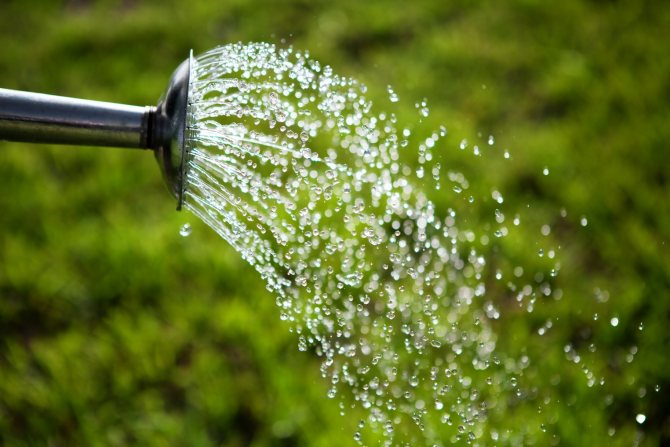

Watering
Harvesting
The first cut of leaves is carried out no earlier than from the second year after planting, provided that they have reached 24-26 cm in height. You need to cut greens selectively, leaving a height of at least 4 cm above the ground, several times per season. If there is no need to collect seeds, the flowering is also cut off.
The end of the harvest season falls in late August - early September. Further, the plant is gaining strength for the winter. Special connoisseurs of culture delay this process and cut the last harvest towards the end of October.
It is worth considering! The more often foliage is cut, the faster it branches and ages. In addition, in this case, the bow does not shoot the seed arrow.
Sowing onion slime and its reproduction
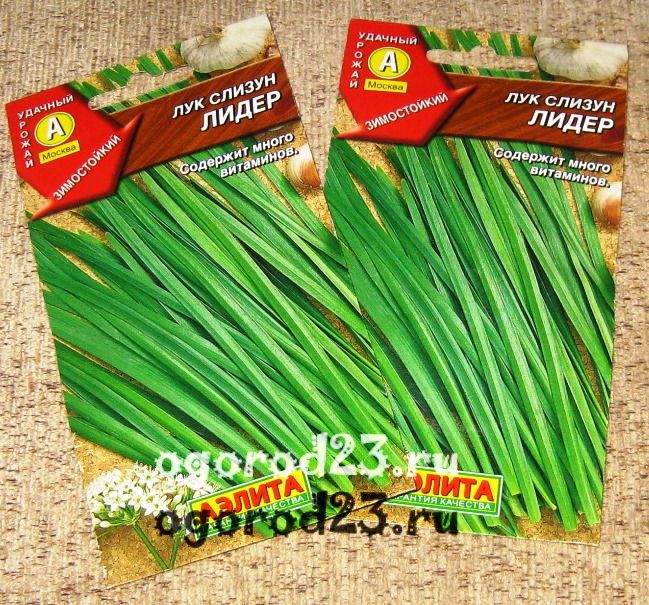

Slime onions are propagated by seeds and vegetatively (parts of a bush or shoots). In seed reproduction, seeds are sown directly into the ground or seedlings are grown.
Sowing seeds is best done in the spring at the first opportunity to go out into the field. For sowing, grooves are cut every 30-35 cm, into which 1-1.5 g of seeds are sown per 1 sq. m. The depth of seeding is 1.5-2 cm. Seedlings appear in 20-25 days, depending on humidity and soil temperature. A marketable crop can be obtained in the second year after sowing.
In the first year of life, the main thing when growing a slime onion is to control weeds, which can easily drown out small plants. Further care consists in regular watering, loosening row spacings, weeding.
In the spring of the second and subsequent years, the site should be cleaned of plant debris, deeply loosened. Before loosening, it is necessary to add 1 sq. m 15-20 g of ammonium nitrate, 40-6 g of superphosphate, 30-40 g of potassium chloride with the addition of trace elements.
For better preparation of plants for winter in August-September, fertilizing with phosphorus-potassium fertilizers is carried out.
Three to four year old slime onion bushes can be used for forcing (growing) at home or in heated glass greenhouses. To do this, in the fall, after the onset of cold weather, but before the soil freezes, the plants are dug out of the ground, placed close to each other in shallow wooden or, better, plastic boxes, left in the open air for freezing.
Then, as necessary, the boxes are brought into the greenhouse or room, watered. After 20-30 days, the plants grow back, they are used together with the bulbs. The yield in this case is 15-20 kg from 1 sq. M. If only the leaves are cut, then for two cuts you can get up to 10 kg of green onions from 1 sq. m.
Slime, like chives, is not affected by powdery mildew (peronosporosis). Seed productivity is good. On average, 5-7 g of seeds can be obtained from one plant. Plants of the third year of life are the most productive.
When the leaves are cut, the plant does not bloom, the leaves contain less fiber, therefore they become more tender. They are used as a seasoning for various dishes, in the preparation of salads.
Description and varietal features
Before growing onions, it will be useful to learn about the characteristics of the plant. The root system is represented by a false bulb with roots. The aerial part is a rosette, which is formed by long flat leaves, slightly rounded at the top.
Note: With proper care, the length of the leaves can reach 30 cm, and the width - 2 cm. A year after planting, the rosette throws out an arrow, at the end of which a beautiful spherical inflorescence is formed.
Scientists have found that this wild plant has pronounced benefits, and harm is only possible for people with certain diseases.
First, let's dwell on the useful properties:
- Only leaves are eaten. They are very soft and have a delicate garlic flavor.
- They contain many vitamins and minerals that are beneficial for the cardiovascular system.
- If you cut the leaf, you can see a slimy substance inside. It has also found application in traditional medicine, as it is used to treat gastritis and ulcers.
- The leaves also contain phytoncides, sugars and carotene, which remove toxins from the body.
In addition, the leaves can not only be eaten, but also used as an external healing agent. For example, placing a piece of onion on a wound will heal faster and the pain will ease or disappear completely.
However, one cannot ignore the possible harm from eating a vegetable. First of all, it should not be eaten by pregnant and lactating mothers, as it can be dangerous for the baby. Doctors advise against using this vegetable for people with gout or exacerbated diseases of the digestive system (Figure 2).
If you and your loved ones have no contraindications to the use of slime, you can plant one of these popular varieties in the country:
- Dwarf: refers to mid-season crops. The length of the leaves can reach 25 cm. The plant is resistant to frost and high yields (up to one and a half kilograms of yield per square meter per year). It is not suitable for heat treatment and is used only fresh.
- Leader: another mid-season variety with light green leaves. They contain a lot of sugar and vitamins, so the taste is only slightly spicy and more like garlic than onion.
- Green: the most compact variety. The taste is very delicate and has light garlic notes. It is resistant to disease and cold, and up to 6 kg of harvest can be harvested from a square meter of a garden bed per year.
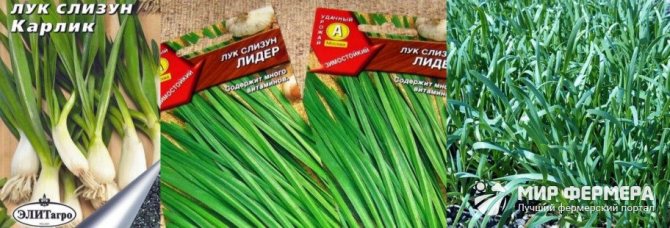

Figure 2. Top varieties (left to right): Karlin, Leader and Green
It is possible to grow such an unusual culture not only in the open field, but also in greenhouses and urban settings, using pots or containers for planting.
Slime Onion Recipes
Slime onion salad
Finely chop the slime, parsley, chop the onion into rings, lettuce into strips. Finely chop the boiled egg. Mix all vegetables, chopped eggs, add salt, black pepper to taste, season with sour cream or mayonnaise.
Ingredients:
- slime onion - 200 g,
- onions - 100 g,
- lettuce - 200 g,
- parsley - 100 g,
- boiled egg - 2 pieces,
- sour cream or mayonnaise - 100-150 g.
Slime onion salad with green peas
Slice the onion into thin strips, mix with canned green peas, boiled, finely chopped egg, add salt to taste, pour sour cream or mayonnaise. Put in a salad bowl, garnish with parsley, dill.
Ingredients:
- slime onion - 500 g,
- canned green peas - 250 g,
- boiled egg - 2-3 pcs.,
- parsley - 5 g,
- dill - 15 g
- sour cream or mayonnaise - 150-200 g.
Planting care
First, you will need to choose a landing site on the site.The soil in this place should be peaty or loamy, very fertile. Then the harvest will be good. It is required to thin out the culture frequently. Before planting it, it is necessary to add rotted manure or humus to the soil. In springtime, add 1 tbsp. l.
fertilizers per 10 liters of water for irrigation. It is supposed to use those compounds that are intended for garlic. Urea must be used at the same concentration. When choosing a place, you also need to take into account that the slime onion is frost-resistant. It is better to plant the crop in spring (May) or early summer.
It is important to pay attention to what was the predecessor of the slime onion. This will also affect the yield. It will be high if tomatoes or cabbage were previously grown in that place. Radishes, cucumbers and potatoes are suitable.
Harvesting and storage
Knowledge of the peculiarities of collecting and storing slime onions will allow you to feast on vitamin greens for a long time.
How and when to collect
Harvested throughout the summer season... The feathers are cut with a clean, sharp knife or scissors. The last time the feathers are harvested is at the end of August, after which they stop watering the plant.


Useful properties of the plant
This herb contains a large amount of nutrients:
- Vitamins of groups B1, B2, PP, C.
- There are many trace elements: potassium, zinc, iron, molybdenum, magnesium. Thanks to these elements, the use of onions helps to strengthen the cardiovascular system and promotes hematopoiesis.
- Phytoncides, carotene and sugars cleanse the body of harmful substances.
- The mucus helps to improve digestion.
- Leaves are useful not only for eating - the juice helps heal wounds and decontaminate areas infected with microbes. Also, this elixir relieves pain in injuries.
See also
How can you feed onions in spring and summer so that they are large?
When eating 30 grams of the plant daily, a person will not feel the need for vital elements - health will improve before our eyes.
Chemical composition
Slime onion leaves contain vitamins C, E and PP, K, A, group B, as well as carotenoids. Like any green plant, slime onion contains a lot of chlorophyll and has a rich mineral composition. Of the macro- and microelements, it contains potassium, manganese, zinc, iron, magnesium, zinc, nickel and molybdenum. It also contains phytoncides, flavonoids, essential oils.
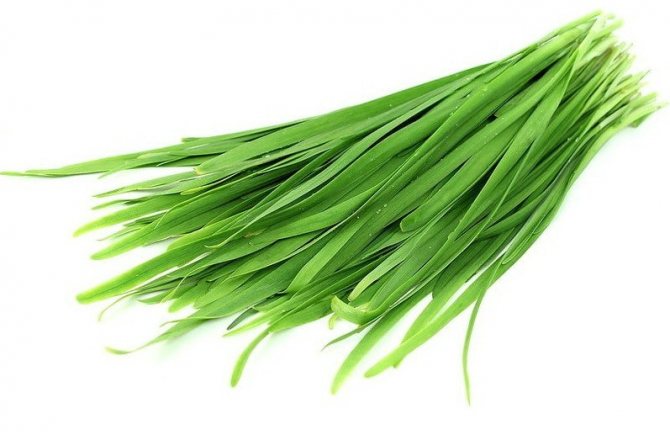

Sowing features
Slime onion, which is also called penetrating, grows wild in Eastern and Western Siberia, as well as in Altai and Central Asia. There, locals traditionally eat it not only fresh, but also pickle and dry it. Slime onions can rightfully be called a salad vegetable. It has a slightly pungent taste and is distinguished by a garlic-onion aroma.
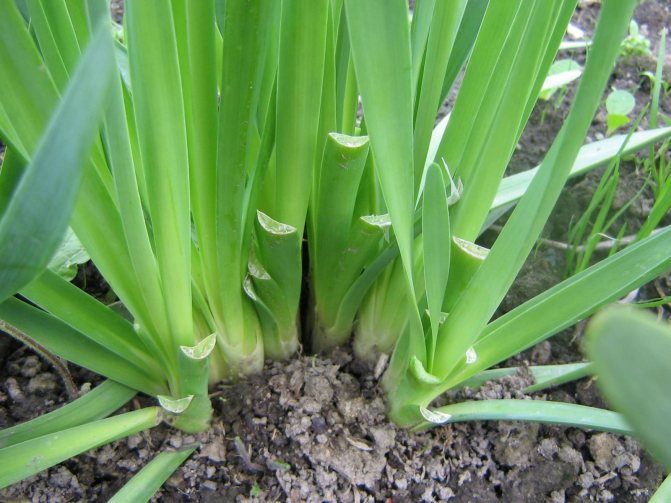

This perennial vegetable is able to withstand even 40 degrees of frost without additional insulation. For 5-6 years, onions will give a good harvest if grown in fertile and moderately moist soil. It is best for sowing such a crop with seeds or growing in another way a plot of land normally illuminated by the sun.
In its predecessors, slime prefers to have tomatoes, cucumbers, potatoes, cabbage, radishes. You can not sow seeds in acidic soil, because then the onion feather will have bitterness.
In autumn, during digging, it is necessary to add compost or humus - the amount of fertilizer is about 10 kg per square meter. Phosphorus-potassium additives are also added - about 40 grams per the same area. In the spring, before planting on the beds, humus is also introduced, and it is also good to spill them with a solution of peat-humic dressings. It is customary to plant slime onions according to this scheme - in rows prepared in advance, the distance between which, ideally, is up to 40 cm, and somewhere between the planting material should be left somewhere 20 cm.A feature that a slime onion has can be safely called its property to grow roots in the form of a semicircle and at the same time displace all unnecessary weeds that have appeared. Since the slime onion is also an ornamental plant, this feature is successfully used by landscape designers to create beautiful rock gardens.
